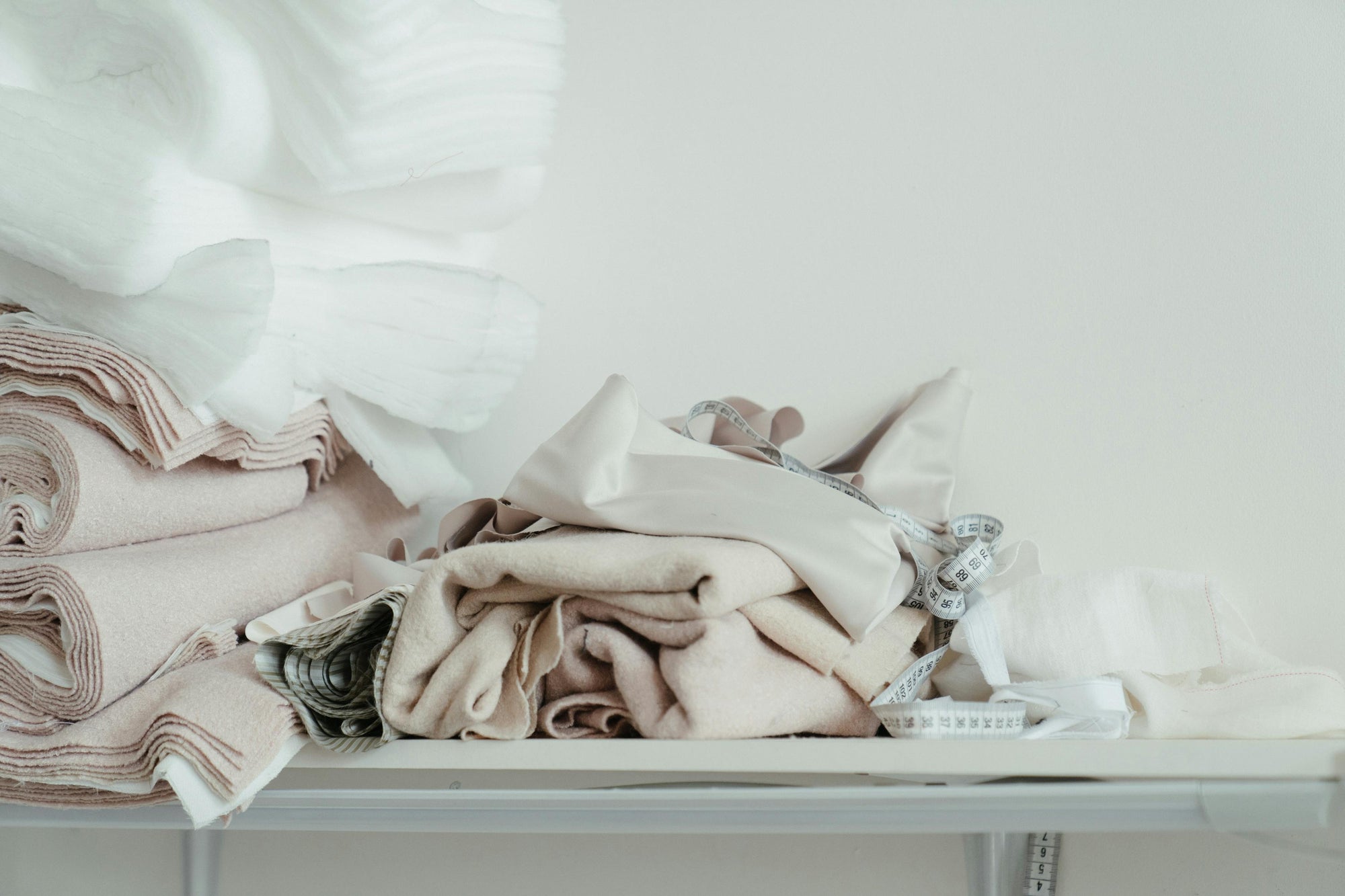In a society driven by fast fashion trends, it’s easy for you to look in your closet and feel like you can’t wear any of it. Unfortunately, our society is built to encourage that “FOMO” around clothing trends: They want you to keep on buying! But, the amount of waste produced by fast fashion is scary.
The fashion industry is one of the largest contributors to pollution and waste globally. But, change is possible with mindful choices. Even if you have clothing that is old, worn, and unwearable, there are choices you can make in recycling your clothing that will still reduce clothing waste.
To help you feel empowered to reduce your own clothing waste, we’re exploring 10 practical strategies to minimize clothing waste.
1. Audit Your Wardrobe:
Start by taking stock of your current wardrobe. What items do you rarely wear? What ones do you wear a lot?
Consider repurposing, donating, or selling any items you don’t have or don’t wear.
An organized and curated closet not only reduces clutter but also ensures that each piece gets the attention it deserves. Have less, and wear them more. This is easier, too, when you love all the clothes you have. This is where shopping for high quality pieces can come in handy but… we’ll get to that later.
2. Embrace the Capsule Wardrobe Concept:
A capsule wardrobe is a term used to refer to a curated collection of essential and multi-purposeful clothing items that can be mixed and matched to create a variety of outfits. The concept of a capsule wardrobe is rooted in the idea of simplifying and streamlining one's closet by focusing on quality, versatility, and timelessness.
The goal is to have a wardrobe composed of a limited number of well-chosen pieces that perfectly align with your personal style and can be worn in various combinations.
By embracing this concept, you can find many ways to wear the same item of clothing, eliminating the need to buy into fast fashion trends or to purchase multiples of the same clothing.
Anne Mulaire's Core Collection is a great place to get ideas for a capsule wardrobe.
3. Repair and Repurpose:
Before discarding damaged clothing, explore options for repair or repurposing. Simple alterations or creative transformations can breathe new life into old favorites. Look for local tailors or seamstresses who can help you. Anne Mulaire has a great program to refresh clothing, either by coming into the store or by shipping clothes to them.
YouTube can be a great place to learn how to sew a button or fix a small hole, too, if you want to try to do it yourself.
For repurposing, there are so many ways to find new life for clothing. Cotton clothes can be used as cleaning rags, for example. Other natural fibers can be cut into smaller, short threads and added in buckets to your garden; Birds could use their nests. If you’re craft, you can make shorts from pants, scrunchies from material, or anything else!
Shift your mindset to throwing things out, and instead think of how they can be reused.
4. Shop Secondhand:
Reducing waste isn’t just about throwing out less clothing; It’s also about supporting the second-life and recycling options out there for clothing. Secondhand clothing shops are a great way to get new clothes while reducing clothing waste. Plus, fashion brands can actually be less expensive, which is great for your budget.
By shopping second hand, you have a bigger impact than you’d think. This shopping practice reduces the demand for new production. It challenges the fast fashion and consumerism trend that makes up a lot of the fashion industry.
Many online stores are embracing the second hand movement so you can easily shop for clothing in your size and style. Anne Mulaire has one, too!
5. Prioritize Quality Over Quantity:
Invest in well-made, durable clothing that can withstand the test of time. Anne Mulaire's sustainable fashion philosophy revolves around the idea of creating high-quality, enduring pieces that not only reduce waste in your wardrobe but also minimize the environmental impact of constant production.
Although quality clothing can be more expensive upfront, you won’t need to replace it as often, so it ends up saving you more in the end. Think of it like this: If you buy a new shirt every season for $10, thats 40$ a year. Two or three years later, you’re spending more than $100 on low quality clothing, and producing a lot more waste. Buying one high-quality shirt for $40 that could last you 3, 5, 6 years? More economical for your budget and the environment.
6. Educate Yourself on Fabrics:
How often do you look at the material tags of clothing? The fabric that clothing is made out of can be a big indicator in how long it will last both in your closet, and in a landfill.
Take it upon yourself to become familiar with sustainable fabrics and materials. Opt for organic cotton, Tencel, or linen, which are eco-friendly and biodegradable. Anne Mulaire's dedication to responsible sourcing of fabrics ensures that their garments are crafted from materials that align with these principles.
7. Choose Timeless Styles:
We know that TikTok trends or clothing haul videos can be appealing, but challenge yourself to second guess these shopping messaging. How much waste does quick-changing trends produce?
When you’re shopping, opt for timeless styles. Black pants, simple wool coats, white button down shirts, neutral jeans, and plain shirts without much pattern or color can be worn today, or in 10 years. When you pick up a piece of clothing, ask yourself if you would have worn it 5 years ago. And if you’ll wear it 5 years in the future.
Anne Mulaire's Best Sellers, Core Collection, and Workleisure are great representations of timeless styles.
8. Support Ethical and Sustainable Brands:
Who you buy from is just as important as what you buy and what you do with your clothing after you purchase it. Do some research on ethical brands who practice sustainability.
Anne Mulaire's transparent approach to production, small-batch manufacturing, and zero-waste philosophy make it a standout choice for those seeking responsible fashion alternatives.
9. Spread the Message:
Finally, we ask that you encourage others to join the movement towards reducing clothing waste. Share your sustainable fashion journey on social media, support sustainable brands like Anne Mulaire, and inspire a ripple effect of mindful choices within your community.
Reducing Fashion Waste: Small Steps Are Best
Reducing clothing waste is not just a personal choice; it's a collective movement towards a more sustainable future. By incorporating these 10 strategies into your lifestyle, with a focus on shopping sustainably, you not only transform your wardrobe but also contribute to a broader shift in the fashion industry.
Don’t worry about doing it all at once either. Keep these in mind next time you’re shopping and see how it changes what you buy… and what you don’t.


